Audi has historically been at the forefront of emerging engine technology. The main goal while designing and manufacturing a drivetrain has been to increase power and efficiency while minimizing exhaust emissions. By using forced induction, it’s possible to have smaller engine displacement and still retain or even increase available engine power.
Audi has used turbocharging on their vehicles since the 1970s. The Audi Quattro was the most widely known turbo Audi from that time period. The Quattro model was also well known then for using Audi’s four-wheel drive system. With a turbocharged powerplant and four-wheel drive, Audi rally cars were untouchable in the racing series.
Wastegate/Diagnosis
Most Audi turbochargers have a mechanical wastegate valve to release excessive turbo pressure. It’s extremely important to have a proper operating wastegate to protect the engine. Excessive boost pressure can damage the turbo assembly and, in the worst case, may cause engine damage.
Through use of an electronic boost pressure sensor, the engine computer monitors and shuts down boost if excessive pressure is noted. The boost pressure sensors are generally trouble free unless they become soaked in oil or blocked with debris.
Audi uses an internal wastegate design on their turbochargers. The primary advantage to this design is a smaller turbo package and simpler installation. The disadvantage of this design is, if a problem develops with the wastegate itself, the entire turbocharger may have to be replaced.
Wastegate “rattle†can also be an issue on certain models. Customers may complain of an engine rattling sound when starting the vehicle or during deceleration. This is usually caused by wear at the connection from the actuator rod to the wastegate arm. This allows exhaust gas pulsations to move or “rattle†the wastegate seal. In extreme cases, the wastegate seal itself can become worn, allowing boost pressure to escape as well as creating a “rattling†sound. A worn wastegate can even set low boost faults.
Audi has released an updated securing clip for the wastegate arm connection. If diagnosing a rattling turbo, check to see if the clip has been updated, as this newer version will address most rattling issues.
Depending on the engine model, a vacuum or pressure-operated wastegate actuator may be used to operate the wastegate itself. If diagnosing a low-boost complaint, this is a good first step in solving the problem. By applying vacuum or pressure with a small vacuum pump at the actuator connection, it’s possible to visually watch the wastegate arm for proper movement. Arm movement should be smooth through the entire range to the end stop.
On many 2.0t models, the wastegate actuating arm can actually seize at the turbo housing pivot, not allowing proper movement. This is becoming more common on higher mileage vehicles and generally requires turbo replacement. It may be possible to free up the wastegate arm by using penetrant at the pivot point if it seizes. However, this is not a permanent fix and should only be used for diagnosis.
Often, on older turbos, the rubber actuator diaphragm may fail as well, causing a loss of vacuum supply. This is easily tested by using a vacuum gauge. This will cause a low boost condition if the diaphragm is damaged.
On newer Audi turbochargers, an electronic wastegate actuator is used. Using an electronic actuator allows for much tighter control over wastegate function. Electronic control is generally more robust than a standard pneumatically controlled valve. This also allows for limited diagnosis and testing of functions. It’s possible to run a test of the actuator itself to verify proper movement as well as via scan equipment. These actuators fail from time to time, generally due to a sticking or rusted arm.
If replacing an electronic wastegate actuator, it must be adapted to the turbo, as most wastegate rods are adjustable. Failure to properly adjust the actuator and run adaptations will result in problems!
Electronic Diverter Valves
Audi uses an electronic diverter valve on their turbocharged vehicles. The diverter valve is used to “divert†excessive boost pressure to the intake tract during vehicle deceleration. If boost pressure continues to build with a closed throttle plate, this can cause damage to the turbo itself. It creates a fluttering sound during deceleration if not diverting boost properly. Audi diverter valves rarely cause over-boost conditions. However, due to programming, the engine will go into fail safe mode if unable to safely control the boost pressure.
The diverter valve used by Audi has gone through many revisions. The early valves had a large, visible rubber sealing diaphragm. Many 2.0t diverter valves suffered from premature failure of this rubber diaphragm used to seal the valve piston. When this fails, the valve is unable to maintain a pressure seal. This can cause fluctuating boost pressure under acceleration and is the most common complaint from customers experiencing problems. The updated valves have a more robust sealing area as well as additional fluting on the piston seal, ensuring a tight fit under boost conditions.
Eventually, a failed diverter valve will set a low-boost pressure fault. A failed diverter valve will not set a fault specifically pertaining to a torn diaphragm. During diagnosis, the only way to check a valve is to remove and carefully inspect it for damage. Checking the diverter valve for proper function is an important step when diagnosing low-boost faults or complaints.
Intercooler Assembly Damage/Inspection
All Audi turbocharged engines have intercoolers. These are necessary to lower boost pressure temperatures and increase efficiency. Lowering the air charge temperature increases the air density, allowing for more powerful, complete combustion. Without an efficiently operating intercooler, “heat soak†can become an issue, degrading power output.
Most newer model Audi vehicles have a large front-mount intercooler. This is the optimum design as it allows for the maximum surface area to be cooled efficiently. Smaller “sidemount†intercoolers are common on older 1.8t engine models. These work best for smaller displacement engines as they have much less cooling area available.
Audi intercoolers are generally trouble free. They do suffer occasionally from bumps and scrapes, which can cause boost issues. The most common damage is from parking blocks. Because of intercooler size and plumbing locations, these are susceptible to impact damage. Most models have plastic intercooler end tanks and boost tube connections. These will break if damaged. Usually a broken intercooler or connection can be heard. Loud whistling and low power are a guaranteed boost leak.
Another commonly damaged component is the charge air pipe connected to the throttle body on 2.0t engine models. This is a plastic charge pipe with multiple mounting points. If removed improperly or haphazardly, damage and boost leaks occur.
Replacement/Inspection
Turbochargers live a very difficult life. They must endure both extreme heat and high speed while operating correctly. Most modern Audi turbochargers can be expected to last between 100–150K miles before needing replacement. This lifespan can be drastically shortened by dirty oil or lack of oil pressure. Turbo impeller damage can even be caused by a contaminated air filter.
Inspecting the turbo for damage can be difficult due to tight access. However, it’s still possible to visually examine the turbo to aid in diagnosis. A borescope is a necessity for this job, particularly to be able to see the turbo impeller and wastegate.
Impeller damage hurts boost performance. Shaft play is also a clear sign of a worn turbo. This can be felt by any excessive side-to-side “wiggle†to the impeller assembly. Too much play can damage impeller blades and the turbo housing. This can be accompanied by a screeching sound as the impeller grinds through the turbo housing.
On an Audi fitted with the 2.0t engine, turbocharger access can be accomplished by removing the air box assembly. This will improve access for separating the exhaust as well as the exhaust manifold bolts.
When removing the exhaust manifold securing hardware, keep a few things in mind:
- Only the upper securing nuts must be fully removed. The turbocharger assembly sits on a supporting bracket held in place by the lower exhaust manifold bolts.
- Loosening the lower manifold bolts slightly will allow the turbocharger assembly to be lifted off its supporting bracket to be removed.
From under the vehicle, removal is straightforward. Remove all boost tubes connected to the turbo. Remove the turbo support bracket. Remove all coolant and oil feed and drain lines. Always replace all sealing rings and gaskets during this process. With the use of metal gaskets in certain applications, you may be tempted to re-use these gaskets. Do not. Even metal gaskets can leak, particularly when re-installed.
After replacing the turbo, you may need to clear any relevant stored faults as well as re-adapt the electronic wastegate if so equipped. It’s always wise to change the engine oil as well during turbo replacement. Any amount of debris, no matter how small, can restrict turbo oil supply. Clean oil will ensure a long service life.
Download PDF

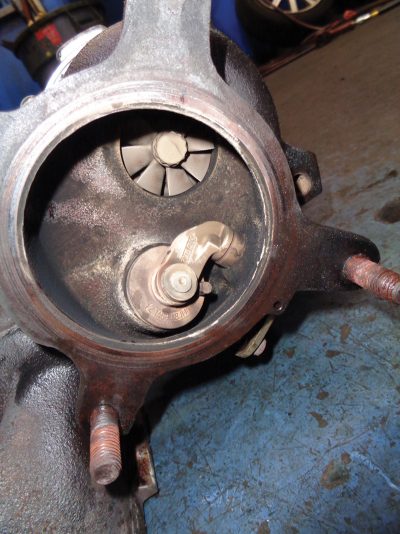
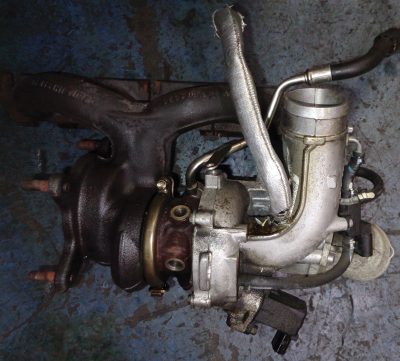


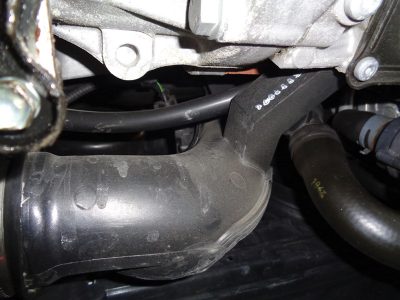
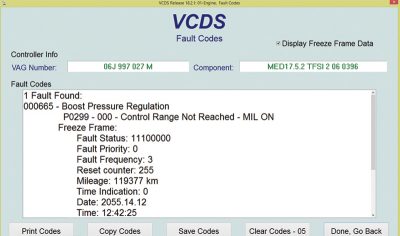
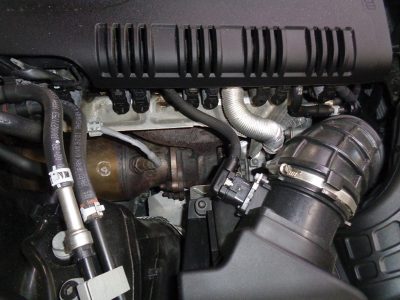

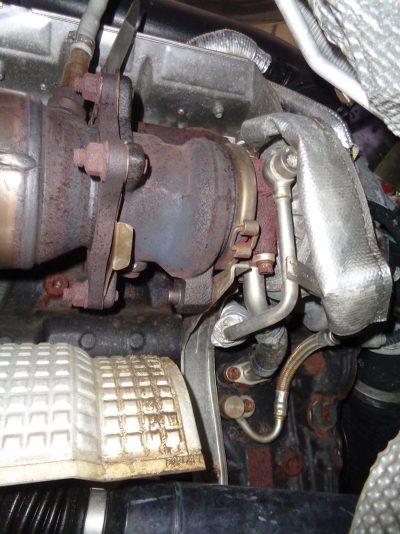
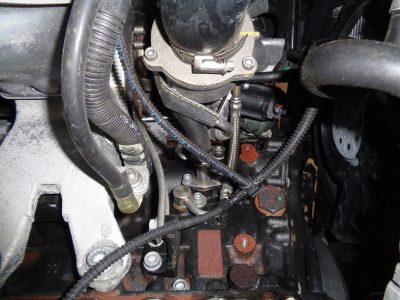



0 Comments